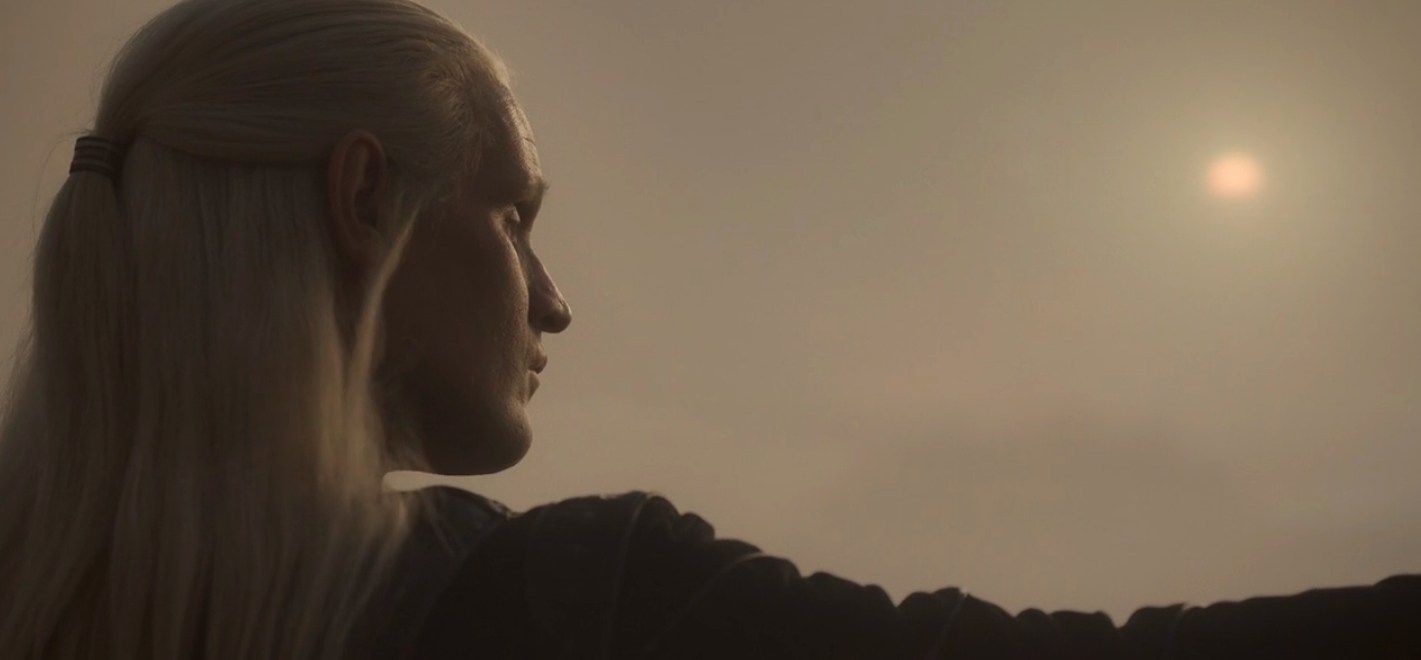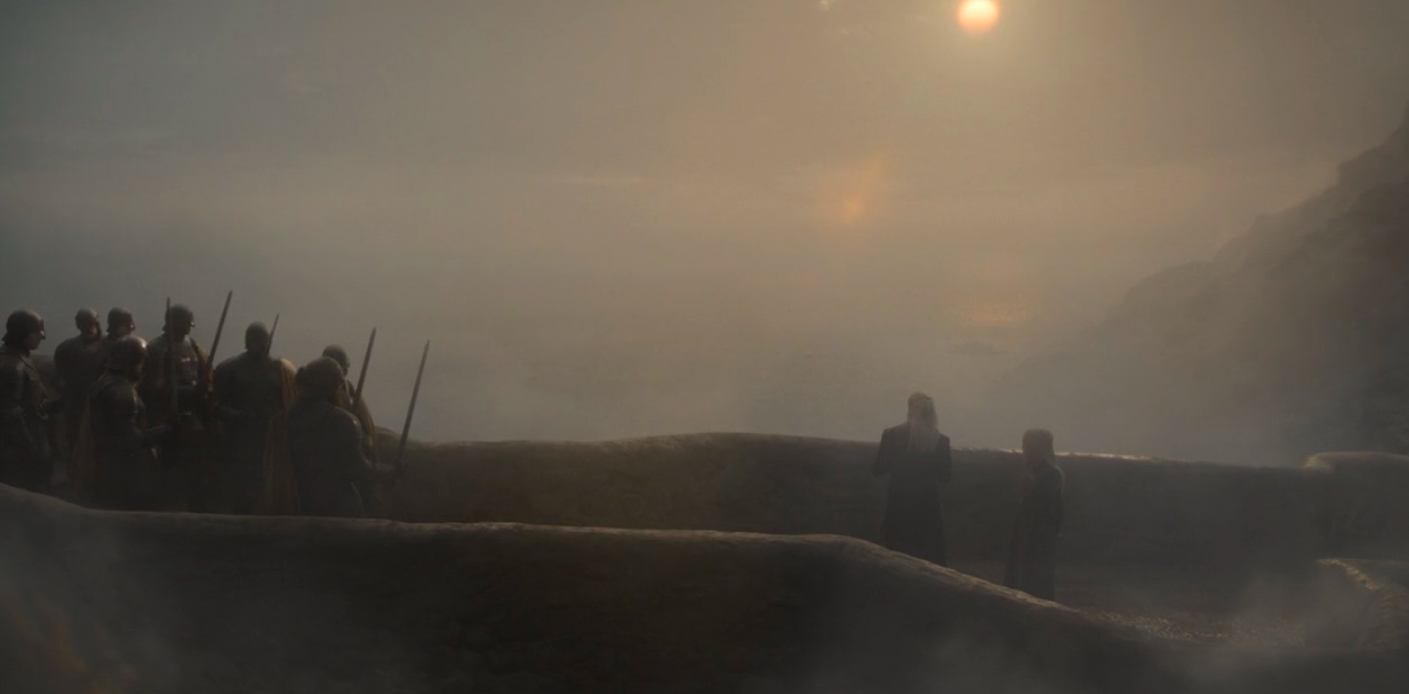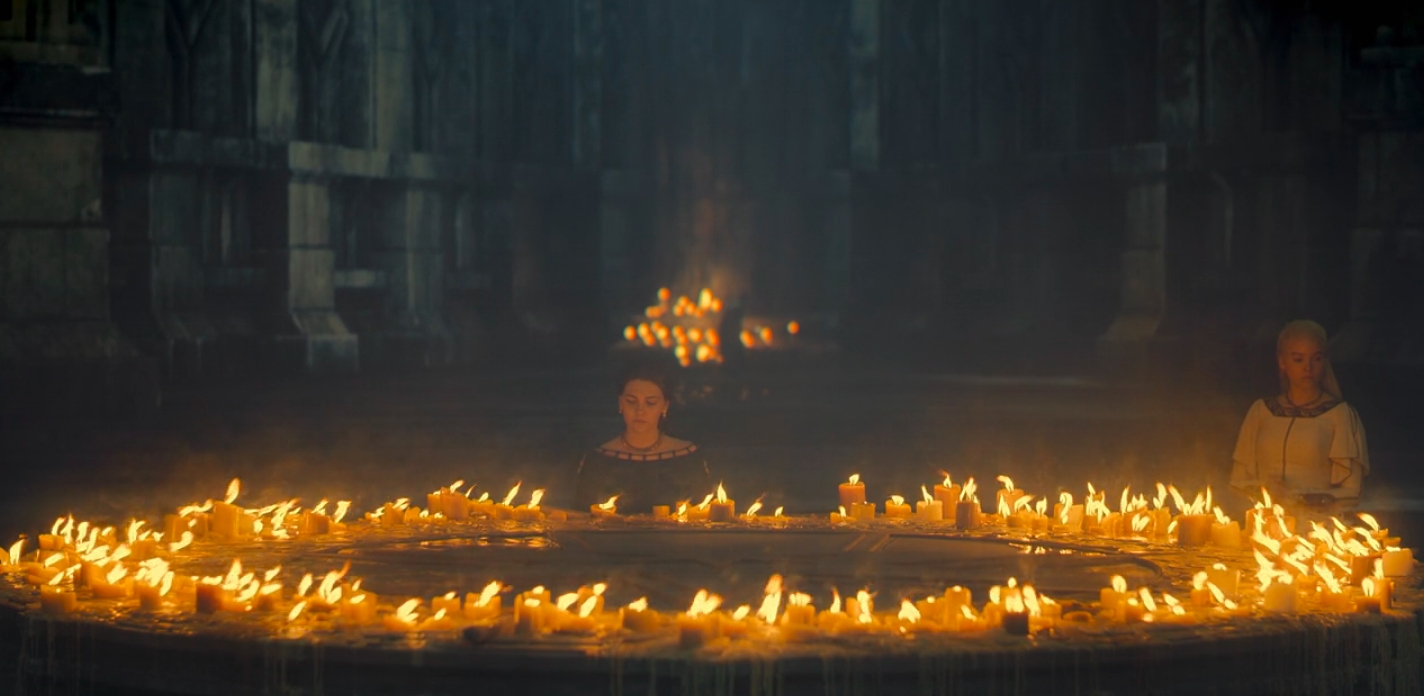
When Ramin Djwadai’s rousing, unmistakable Game of Thrones theme played as a trail of blood moves around during the House of the Dragon opening credits, I imagined what it would be like if Frasier used the Cheers theme song, but I simply cannot imagine how much sadder my life without the weird scrambled eggs jazz. The use of the Game of Thrones theme is likely, and hopefully not permanent. Perhaps it is a troll, or a manipulative attempt to activate nostalgia just in case anyone wasn’t feeling House of the Dragon yet. Despite using the same theme song for its opening credits, the second episode of House of the Dragon distinguishes itself from Game of Thrones. The second episode, “The Rogue Prince,” immediately explains its six-month time jump. It’s been half a year since the events of the first episode, and the audience gets to fill in the blanks: in the six months since Queen Aemma’s death, Prince Daemon has taken Dragonstone, King Viserys is struggling under pressure to find a new wife, and Rhaenyra doesn’t know how to connect with her father and learn how to rule Westeros.
This accelerated timeline differentiates House of the Dragon from its predecessor (again, despite having the same theme song). Game of Thrones was methodical with its storytelling in a different way: it followed characters so closely that we sometimes saw them use the bathroom, and established the scope of its world by depicting characters traveling from one place to another for an entire season, or longer. In season four of Game of Thrones, Arya and the Hound spend the entire season traveling to their destination of The Vale. In the first season, several episodes follow Ned Stark and Sansa Stark traveling to King’s Landing alongside Robert Baratheon and the Lannisters. Bran Stark, the greatest storyteller of all time, spent nearly the entire series traveling, a storyline that was so irrelevant that he did not even appear in an entire season. In its earlier seasons, Game of Thrones took its time, which made Westeros feel as grueling as it is. When the show accelerated the narrative in its later season, it was jarring and inconceivable. Game of Thrones betrayed the intimate pace that made it so good.
House of the Dragon won’t be making this mistake. Time jumps in television shows are not easy, but when executed well they serve the story, characters, and audience. Mad Men, The Americans, and Halt and Catch Fire, for example, used time jumps cleverly and with intention. Eliminating unnecessary parts of the characters lives moves the story forward, and the unknown can make characters even more interesting. It’s bold for a series like House of the Dragon with completely new characters to do a time jump in episode two. But it works, because we didn’t need to see those six months. We also know that we’ll see even more significant time jumps throughout the season, as young characters including Rhaenyra and Alicent Hightower will be played by older actors. The time jump also feels like a conscious decision to establish that this show is not Game of Thrones, and it suggests an awareness of the mistakes Game of Thrones made with its stark shift in pacing.
House of the Dragon also differentiates itself visually. In “The Rogue Prince,” the show introduces Dragonstone with sweeping shots of it. Prince Daemon and Otto Highwater face off on the footbridge at Dragonstone. It’s a cloudy day on the rocky beach, with a dramatic fog surrounding everyone and camouflaging the castle. But through the fog, the orange sun, far in the distance shines through it, giving a bit of ambient lighting. Rhaenyra shows up on dragonback, her silhouette on top of the creature like a shadow against the sky. The stylish scene gives the series a singular style that we never would have seen on Game of Thrones.

Along with its pacing, Game of Thrones also had a style shift in its later seasons. Its earlier seasons focused on world-building and performance and thusly were filmed in a more straightforward style reminiscent of period pieces of the 80s and 90s. In its earlier seasons, the lighting and shot composition are simple (though excellent in their simplicity). As the show got more popular it also got more stylish, using modern filmmaking techniques and more visual effects to capture its sprawling fantastical scope. House of the Dragon is showcasing its unique cinematic style instantly with this scene and with lots and lots of candles. Essentially, it relies on sources of light including candles and the sun, a reference to the Targaryen House words “fire and blood.” It’s a little on the nose, yes, but it’s working visually and thematically.

House of the Dragon knows exactly what it’s doing. In just two episodes, the prequel has separated itself from its predecessor (except for the theme song of course), indicating that it has learned from the mistakes Game of Thrones (or, more accurately, D.B. Weiss and David Benioff) made that sunk the cultural phenomena in its final stretch. Although coming from an established franchise and George R.R. Martin’s source material, House of the Dragon has a distinct style and confident storytelling, rather than a reliance on source material, which makes it feel like a television show that could exist without its predecessor rather than a desperate attempt to keep a franchise alive.
